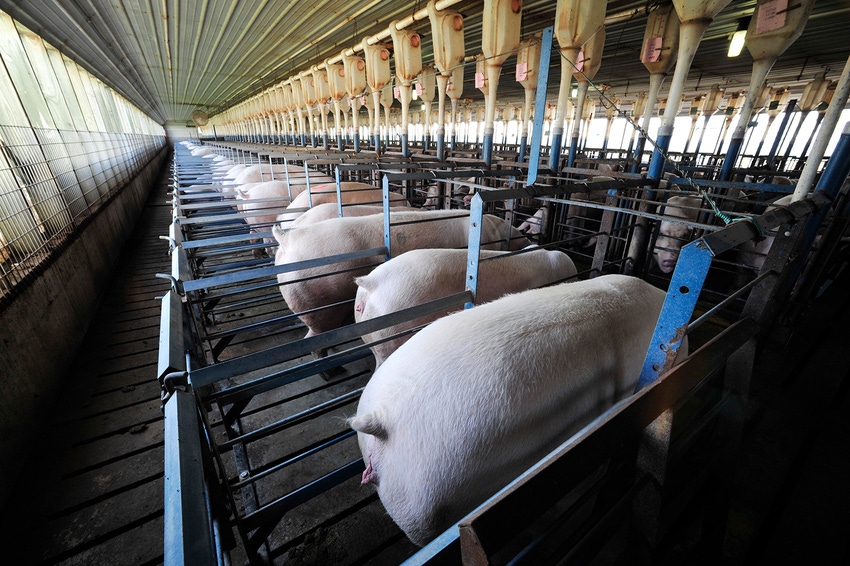As with any porcine reproductive and respiratory syndrome virus strain, biosecurity and biocontainment are key.

A porcine reproductive and respiratory syndrome virus strain first detected in 2009 has shown an uptick in open reading frame-5 (ORF5) sequencing in the adult/sow farm age category, according to the latest Swine Health Information Center Domestic Swine Disease Monitoring report. Lineage 1C RFLP 1-2-4 detection has continued to increase since the high activity was first reported in August, with 264 sequences in 2022, more than 62.7% of the total number of sequences detected from 2009 to 2021 (n= 421). In 2021, this strain was detected in the Midwest and west Mississippi river states, and in 2022 some detections also occurred in the East of Mississippi states, with detections in Illinois, Indiana and Ohio. Since November, it has been increasing the number of detections in Iowa, and the East Mississippi states, raising concern about this ongoing winter season.
According to Giovani Trevisan, Daniel Linhares and Guilherme Arruda Cezar, from the Iowa State University Veterinary Diagnostic Laboratory and principal investigators and project coordinator for the Swine Disease Reporting System, it appears that the 2022 L1C 1-2-4 is not closely related to strains classified as L1C 1-2-4 and recovered from the years 2020 and 2021.
As far as the strain's similarity to the L1C variant 1-4-4, the ISU team says both strains share 90-93% nucleotide identity between them, but in terms of spread, L1C 1-2-4 seems to spread at a lower rate.
"The clinical signs have been variable and include aborts, pre-weaning mortality and impact on downstream performance. Practitioners' reports are variable, with reports of being worse than the L1C variant RFLP 1-4-4 in naive herds and other reports having mild clinical signs of aborts and pre-weaning mortality," the researchers noted.
What should producers keep in mind regarding the 1-2-4 strain? The ISU VDL team says the takeaways are similar to any other PRRSV strain.
"Keep vigilant, educating and training farm personnel in biosecurity and biocontainment practices to be prepared to contain the entrance or spread of distinct PRRSV strains across herds," the researchers said.
This includes following transportation routes and providing adequate hauling truck sanitation as biosecurity and biocontainment practices.
"It is also important to remind producers that despite the lack of a silver bullet to fully prevent losses caused by wild-type PRRSV infections, the combination of existing strategies such of bio-management practices, gilt flow, and herd immunization results in significantly reducing the losses, and bringing the breeding herd (and downstream flow) back to baseline productivity within three to four months from the outbreak," the ISU VDL team concluded.
About the Author(s)
You May Also Like





